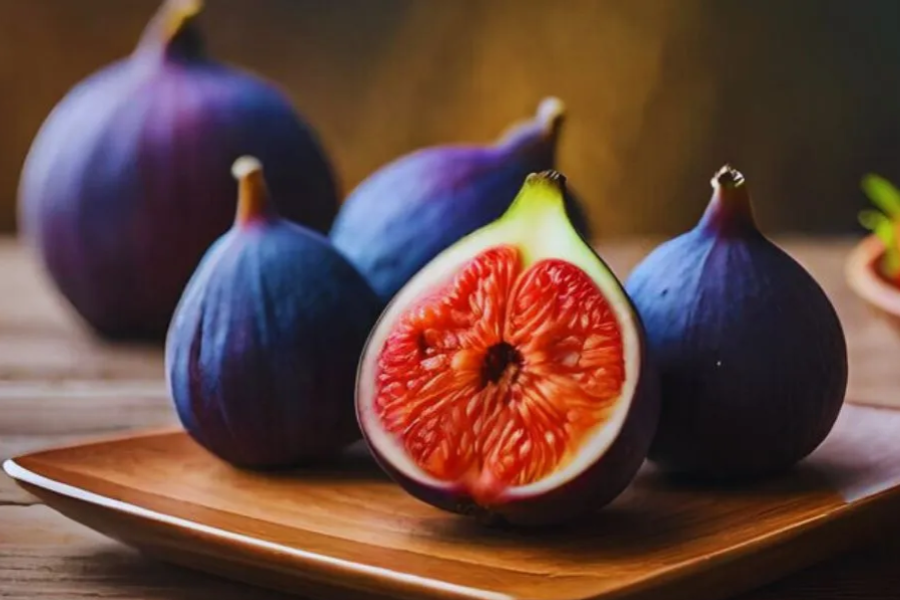In the diverse realm of cultural expressions, there exists a term—Figù—that may not be immediately familiar to many, yet it holds significant importance in various global traditions. Figù is not merely a word; it represents a deep-rooted cultural symbol that carries immense value across different societies. This exploration examines the essence of Figù, tracing its historical roots, its current role in modern culture, and its lasting influence on shaping collective narratives.
Defining Figù: More Than Just a Word
Figù is far from being a simple term; it encapsulates a range of meanings that transcend its literal definition. While it can be understood at face value, its deeper connotations stretch far beyond its surface interpretation. Figù embodies concepts, emotions, and symbols that hold significance in various social and cultural contexts. Its meaning is adaptable, shifting in response to regional differences and cultural shifts over time. Let’s dive deeper into the layers of Figù to uncover its true importance in various cultural frameworks.
A Symbolic Concept Beyond Its Literal Meaning
At its core, Figù operates as a powerful symbol. It represents more than just a defined idea or feeling—it can evoke profound cultural meanings. In numerous traditions, words like Figù are used to express complex values, historical contexts, or emotional states that may not be easily articulated through conventional language. For instance, in one culture, Figù may symbolize unity and strength, while in another, it might evoke resilience or celebration.
This symbolic depth is what differentiates Figù from ordinary terms. It is not merely a word—it acts as a vessel for conveying shared cultural experiences and collective values that are often too intricate to capture with just conventional vocabulary.
The Localized Interpretations of Figù
One of the most intriguing aspects of Figù is its adaptability across different geographical and cultural landscapes. While the essence of Figù remains largely consistent, its interpretation can vary significantly depending on the region, customs, and traditions of the people who use it. For example, Figù might hold sacred significance in one community’s religious rituals, while in another, it could be used in a more casual or everyday context.
This flexibility ensures that Figù retains its relevance, even as it transforms to meet the specific needs and meanings of different cultures. Its ability to adapt and resonate in a variety of contexts ensures its enduring cultural relevance.
Figù as a Medium for Personal Expression
For many individuals, Figù acts as a powerful tool for personal expression. It can serve as a reflection of one’s inner feelings, life experiences, or individual perspectives. When used by individuals, Figù becomes more than just a term; it evolves into a way of articulating identity, values, and personal beliefs. Whether in casual conversation or profound discourse, Figù conveys messages that reach beyond the conventional confines of language. It becomes a vessel for expressing sentiments of strength, hope, or resilience, showcasing how the term evolves from mere vocabulary into a deeply personal and expressive concept.
Figù in Social and Cultural Contexts
While Figù is often a personal expression, it also holds significant meaning in larger community settings. Across different cultures, Figù is used to symbolize shared values, customs, and collective heritage. In these settings, it serves as a tool for uniting people and reinforcing a sense of collective identity.
For example, Figù might serve as a symbol of solidarity during social movements, a representation of cultural pride during festivals, or a manifestation of shared experiences during communal events. Its ability to unify people and express common beliefs makes Figù a central part of community life, both in celebratory and solemn moments.
Figù as a Bridge Between Generations
Another fascinating dimension of Figù is its role in connecting different generations. Rooted in cultural history, Figù acts as a conduit for passing down knowledge, traditions, and values. Older generations often use Figù to impart wisdom or ancestral teachings, while younger generations reinterpret it to reflect contemporary perspectives. This dynamic ensures that Figù remains relevant across generations, providing a continuous link between the past and the present.
Through this ongoing exchange, Figù evolves and transforms, contributing to the evolution of culture and identity within each successive generation.
The Ever-Changing Nature of Figù
The meaning of Figù is far from fixed. Over time, it has undergone transformations in its interpretation, ensuring that it remains relevant in changing cultural contexts. What Figù signified in the past may differ significantly from its meaning today. As societies progress, language shifts and cultural norms evolve, Figù also adapts to reflect these changes.
In today’s digital age, for instance, Figù has found new forms of expression through social media, online communities, and digital art. It appears in memes, hashtags, and other online platforms, sometimes carrying new meanings that weren’t imaginable when the term first emerged. This adaptability is a testament to Figù’s resilience and its capacity to remain meaningful across changing social landscapes.
The Mysterious Roots of Figù
The origins of Figù remain somewhat elusive. Linguists and historians believe that the term may have evolved from ancient languages or dialects, with its exact origin being difficult to trace. Over time, Figù has morphed into a multi-layered concept, absorbing influences from various cultures and communities as it spread across the globe. Its evolution is a fascinating example of linguistic and cultural adaptation, blending ancient traditions with contemporary meanings.
Figù in Rituals and Cultural Practices
In some parts of the world, Figù plays an integral role in cultural practices and rituals. It can symbolize important aspects of life, from personal identity to spiritual beliefs. In certain European traditions, for example, Figù may be associated with customs or ceremonies that hold significant spiritual meaning. Artists and writers, too, have been inspired by Figù, using it as a central theme in their works to explore complex societal concepts such as resilience, heritage, and the human experience.
Contemporary Uses of Figù
In modern communication, Figù is often used informally, sometimes carrying humorous or sarcastic undertones. Its versatility makes it an essential element in contemporary discourse, bridging different cultures, generations, and forms of expression. Whether in casual conversations or social media interactions, Figù continues to evolve and adapt, reflecting the diversity and fluidity of modern cultural exchanges.
Figù in Everyday Life: From Conversations to Celebrations
Though not universally recognized in daily conversations, Figù remains a vibrant part of life for those familiar with it. It is integrated into idiomatic expressions, conversations, and even festivals, where its meaning shifts depending on the context. Whether it’s a playful remark among friends or a significant cultural expression during celebrations, Figù‘s flexibility ensures that it remains relevant and meaningful in the flow of daily life.
The Rich Symbolism of Figù
One of the most compelling aspects of Figù is its symbolic power. Across diverse cultures, it can symbolize everything from personal strength to collective joy and even serve as a medium for addressing more profound philosophical or existential themes. Its ability to encapsulate complex ideas in a single term makes Figù an invaluable part of cultural identity and expression.
Figù in Art and Literature
Throughout history, Figù has inspired artists, poets, and writers alike. It often appears in literature as a metaphor or allegory, representing deeper emotional or cultural meanings. In visual art, Figù can be depicted through colors, shapes, and imagery, invoking the term’s rich significance. This versatility allows Figù to transcend linguistic and artistic boundaries, maintaining a strong presence across various forms of creative expression.
The Ongoing Relevance of Figù
As globalization brings different cultures closer together, words like Figù play an essential role in facilitating cross-cultural understanding and exchange. Figù is more than just a word; it serves as a bridge between cultures, helping to communicate shared human experiences and emotions in a world that is increasingly interconnected. Its ability to adapt and resonate in diverse contexts ensures that Figù will continue to hold significance for generations to come.
The Future Outlook of Figù
While predicting the exact future trajectory of Figù is challenging, its ongoing relevance suggests that it will continue to evolve and adapt in future cultural discussions. As newer generations increasingly turn to digital platforms like social media and online storytelling, the meaning and application of Figù are likely to expand, embracing fresh interpretations and evolving forms. Its ability to stay significant across diverse media formats guarantees that Figù will remain a key element in cultural dialogues around the globe for many years.
Why Protecting Figù Matters
Safeguarding Figù is not merely about preserving a word—it’s about maintaining the essence of cultural identity and the unique expressions that shape a community’s character. As languages naturally evolve, terms like Figù provide us with invaluable insights into the beliefs, traditions, and histories of various cultures. Ensuring the continued existence of words such as Figù is critical to preserving the richness of human expression and to providing future generations with a connection to their cultural legacies. Let’s explore the significance of conserving Figù and its broader impact on cultural heritage.
Preserving Cultural Identity Through Figù
Central to the preservation of Figù is the protection of cultural identity. Words like Figù are much more than linguistic tools—they are carriers of tradition, representing the struggles, triumphs, and experiences of a community. When these words are lost or forgotten, we risk severing our connection to a collective past. Figù embodies a historical narrative and conveys how people have expressed their values, emotions, and worldviews across generations.
These linguistic artifacts are crucial to understanding the complex makeup of human societies and provide insight into the lives and traditions of those who use them.
Language: A Dynamic and Ever-Evolving Entity
Language is not a stagnant entity—it shifts and transforms in response to changes in culture, technology, and societal norms. Although this natural evolution is essential, some words, like Figù, carry meanings that surpass their era. As societal conditions evolve, language adapts, but preserving time-honored words ensures the continuity of cultural expressions.
Throughout its history, Figù has adapted to fit new contexts, but its foundational meanings remain firmly rooted in cultural traditions. By protecting such words, we honor the depth of language and its role in connecting generations, preserving cultural continuity even as language itself changes.
The Role of Figù in Transmitting Heritage Across Generations
One of the primary reasons to preserve Figù is its ability to facilitate the transfer of cultural knowledge and practices between generations. Words like Figù act as vessels that pass down stories, traditions, and ideologies from one generation to the next.
For instance, older generations may have a particular understanding or significance attached to Figù, and by retaining the term, younger generations can tap into this rich cultural reservoir. In this way, the preservation of Figù promotes intergenerational dialogue, ensuring that traditional knowledge is preserved and respected.
Facing Globalization: The Challenge of Protecting Figù
As globalization continues to bring the world’s cultures closer together, there is a risk that traditional words and expressions like Figù might be overshadowed by more widely spoken languages. While the benefits of global interconnectedness are undeniable, one of its drawbacks is the potential loss of regional dialects and culturally significant terms.
However, by actively promoting and preserving words like Figù, we ensure they continue to hold relevance in a globalized world. This effort is not about opposing globalization but about celebrating and maintaining the cultural diversity that makes our global community rich and varied.
The Relevance of Figù in Digital Communication
In today’s digital landscape, terms like Figù are finding new ways to endure and thrive. Platforms like social media, blogs, and online communities provide an excellent space for these traditional words to reach younger, tech-savvy audiences, ensuring their survival in modern communication.
Embracing the digital world allows us to integrate Figù into daily discourse, keeping it alive and allowing it to evolve in ways that are meaningful to contemporary users. By using digital spaces to highlight terms like Figù, we create a bridge between traditional language and modern expression.
Celebrating Diversity Through the Preservation of Figù
The preservation of Figù plays a vital role in fostering a global conversation about cultural diversity. As the world becomes more interconnected, it is essential to acknowledge and celebrate the unique linguistic and cultural contributions of each community. Words like Figù serve as ambassadors, offering the world a deeper understanding of the values and beliefs that shape different ways of life.
By valuing and protecting Figù, we participate in the larger conversation about cultural preservation. In an era when global homogenization often prevails, Figù stands as a testament to the importance of celebrating and maintaining our differences, enriching the global cultural mosaic.
Figù’s Contribution to a More Inclusive Global Society
Preserving Figù is not simply about holding on to a word—it’s about creating a more inclusive world. By understanding and appreciating cultural terms like Figù, we deepen our respect for the diversity of human experiences. Each term preserved is an important step in resisting cultural erasure and recognizing that every language carries something of immeasurable value.
As people from different backgrounds engage with words like Figù, they gain a greater understanding of the histories, values, and identities that shape others. This mutual respect and empathy are crucial ingredients in building a more inclusive, interconnected world.
Securing the Legacy of Figù for Future Generations
As we look ahead, it is crucial to continue efforts to ensure the preservation of words like Figù amid rapid cultural shifts. It is essential for communities, educators, and cultural institutions to collaborate in ensuring that Figù remains accessible, relevant, and respected. This can be achieved by incorporating Figù into educational frameworks, using it in contemporary literature, and encouraging its use in various cultural expressions.
The future of Figù depends on our collective ability to recognize its cultural significance and ensure its continued relevance. By doing so, we help ensure that Figù remains a vibrant part of global cultural discourse for generations to come.
Key Facts
1. A Multifaceted Term with Cultural Versatility
- Figù is a term that carries different meanings across various cultural contexts. It can symbolize emotions, values, historical concepts, and philosophical ideas, such as joy, resilience, or unity. Its meaning is adaptable and evolves depending on the culture or region in which it is used.
2. Rooted in Ancient Linguistic Traditions
- The exact origin of Figù is unclear, but it is believed to have ancient linguistic roots, evolving through different dialects and languages. Its journey through time has allowed it to take on new meanings and adapt to the needs of different communities.
3. A Symbol of Cultural Identity and Heritage
- Figù holds deep cultural significance as it represents various aspects of identity and heritage. It serves as a medium for expressing shared values, beliefs, and experiences that connect individuals within a community, helping to preserve cultural traditions.
4. Fluid and Evolving Across Generations
- Figù is not a static concept; its meaning and usage change over time. It adapts to reflect modern societal shifts, new communication styles, and digital platforms. Despite these changes, Figù retains its historical roots and remains a dynamic part of cultural conversations.
5. Key in Bridging Communities and Celebrating Diversity
- Figù serves as a tool for unity, helping to bridge gaps between different cultures, regions, and generations. Its use in everyday life, art, literature, and cultural practices enables it to be a vital link that fosters mutual understanding and appreciation for cultural diversity.
Conclusion: The Enduring Legacy of Figù
Figù is much more than a simple word. It is a dynamic, evolving expression that holds significant meaning across different cultures. Whether symbolizing strength, joy, or profound existential thoughts, Figù acts as a bridge between the past and the present, connecting diverse cultures. Its role in art, literature, and everyday communication highlights its adaptability, and its ongoing presence guarantees that it will continue to shape the cultural landscape for future generations.
Frequently Asked Questions About Figù
Q: What is the meaning of figù?
A: The term Figù is multifaceted, with its meaning varying based on the cultural or social context in which it’s used. It can represent a range of ideas, from emotions like joy and perseverance to deeper, more philosophical or symbolic concepts that resonate within different communities.
Q: Where did the word figù come from?
A: The exact origins of Figù remain somewhat ambiguous, but it’s thought to have emerged from ancient dialects or languages. Over time, it has evolved, taking on new forms and interpretations as it spread across different cultures and communities.
Q: How is figù incorporated into everyday life?
A: In certain cultural settings, Figù is frequently used in day-to-day conversations. It often appears in expressions, sayings, or is featured prominently in rituals and cultural events that reflect the values and traditions of the community.
Q: Why does figù hold such cultural importance?
A: Figù plays an essential role in representing various facets of personal and collective identity. It allows people to articulate core beliefs, foster connections within communities, and keep cultural traditions alive, making it a symbol of shared heritage and social cohesion.
Q: Can the meaning of figù evolve over time?
A: Absolutely. Figù is not a fixed concept—it changes with the times. While its core meaning remains grounded in tradition, it adapts to modern circumstances and shifts in cultural and social dynamics, allowing it to stay relevant across generations.
Stay in touch to get more news & updates on World Trend!





